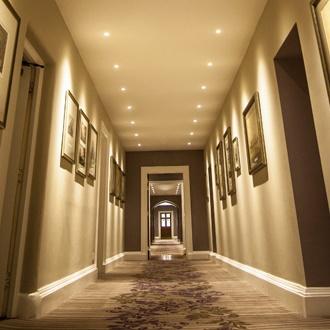
Plaster over architectural ceiling downlights: Seamless Lighting for Modern Spaces
When it comes to contemporary lighting design, the quest for seamless integration and minimalistic aesthetics is paramount. One of the innovations that perfectly aligns with this philosophy is plaster-in downlights. These fixtures offer a sleek, flush-mounted appearance that enhances the architectural integrity of any space. In this blog, we’ll explore what plaster-in downlights are, their benefits, installation process, and design considerations to help you make an informed decision for your next lighting project. But if you want a sleek, modern, sexy and seemless look when it comes to downlights then these are the solution and you can order a wide range of them right here on The Urban Lighting Website. We will then arrange fast UK home delivery.

What are Plaster-In Downlights?
Plaster-in downlights, also known as trimless or flangeless downlights, are recessed lighting fixtures designed to be installed flush with the ceiling surface. Unlike traditional downlights that have a visible trim or flange, plaster-in downlights blend seamlessly with the ceiling, creating a clean and uninterrupted look. This is achieved by plastering over the fixture’s edge during installation, making it indistinguishable from the rest of the ceiling.
Benefits of Plaster-In Downlights
Aesthetic Appeal: The primary advantage of plaster-in downlights is their minimalist design. By eliminating visible trims, these fixtures provide a sleek and modern look that enhances the overall aesthetic of the space.
Seamless Integration: Plaster-in downlights blend seamlessly with the ceiling, making them ideal for contemporary and minimalist interiors. They are perfect for spaces where you want the lighting to be subtle and unobtrusive.
Versatility: Available in various shapes, sizes, and light outputs, plaster-in downlights can be used in diverse settings, from residential to commercial spaces. They are suitable for living rooms, kitchens, hallways, offices, galleries, and retail spaces.
Enhanced Lighting Quality: These downlights often come with advanced LED technology, offering superior light quality, energy efficiency, and longer lifespan compared to traditional lighting options.

Installation Process
Installing plaster-in downlights requires careful planning and precision. Here’s a step-by-step overview of the process:
Planning and Layout: Determine the placement of the downlights to ensure even lighting distribution. Consider factors like ceiling height, room dimensions, and specific lighting needs.
Cutting the Ceiling: Cut the appropriate-sized holes in the ceiling where the downlights will be installed. Precision is crucial to ensure a snug fit.
Mounting the Housing: Install the housing of the downlight fixture into the ceiling. Secure it properly to ensure it stays in place.
Electrical Connections: Make the necessary electrical connections, ensuring they comply with local building codes and safety standards.
Plastering: Apply plaster around the edges of the downlight fixture, blending it seamlessly with the ceiling. This step requires skill to achieve a smooth, flush finish.
Final Touches: Once the plaster is dry, sand it down to achieve a perfect finish. Finally, insert the LED light module and test the installation.

Design Considerations
When incorporating plaster-in downlights into your design, consider the following:
Ceiling Height: Higher ceilings can accommodate larger downlights with higher lumen output, while lower ceilings may require smaller fixtures to prevent overpowering the space.
Lighting Needs: Determine the purpose of the lighting. Ambient lighting will require different specifications compared to task or accent lighting.
Dimming Options: Choose dimmable downlights for added flexibility. This allows you to adjust the lighting intensity to suit different moods and activities.
Color Temperature: Select the appropriate color temperature (measured in Kelvin) to create the desired ambiance. Warm white (2700K-3000K) is ideal for cozy, relaxing spaces, while cool white (4000K-5000K) is better for task-oriented areas.
Beam Angle: Consider the beam angle to control the spread of light. Narrow beams are suitable for focused lighting, while wider beams are better for general illumination.

Conclusion
Plaster-in downlights are a sophisticated lighting solution that can transform any space with their clean, modern aesthetic and seamless integration. While the installation process is more involved compared to traditional downlights, the result is a stunning, uninterrupted ceiling that enhances the overall design of your interior. Whether you’re renovating a home or designing a commercial space, plaster-in downlights offer a versatile and elegant lighting option that is sure to impress.
For those looking to achieve a minimalist, high-end look, plaster-in downlights are definitely worth considering. Their ability to disappear into the architecture while providing exceptional lighting makes them a favorite among designers and architects alike. So, if you’re aiming for a seamless, contemporary look, these downlights might just be the perfect solution for your next project.





